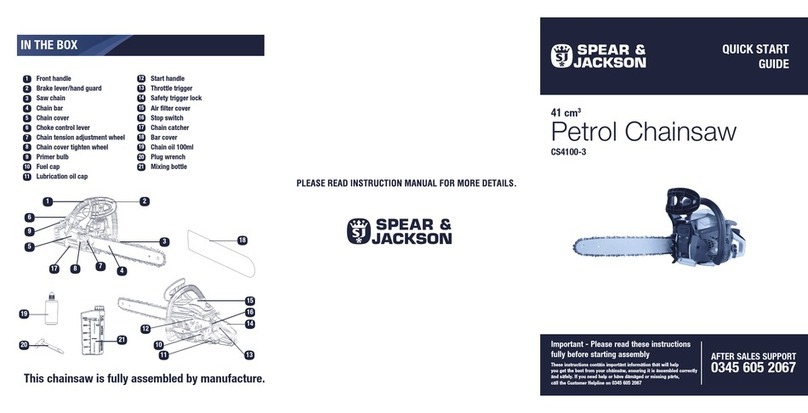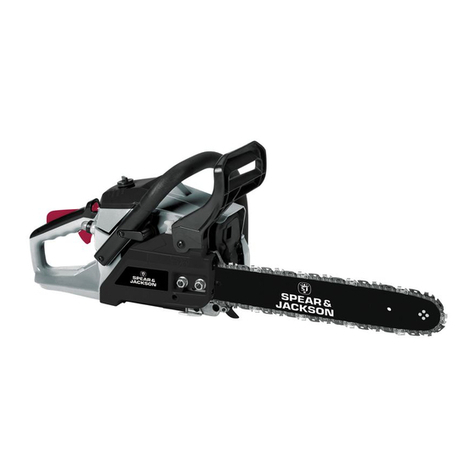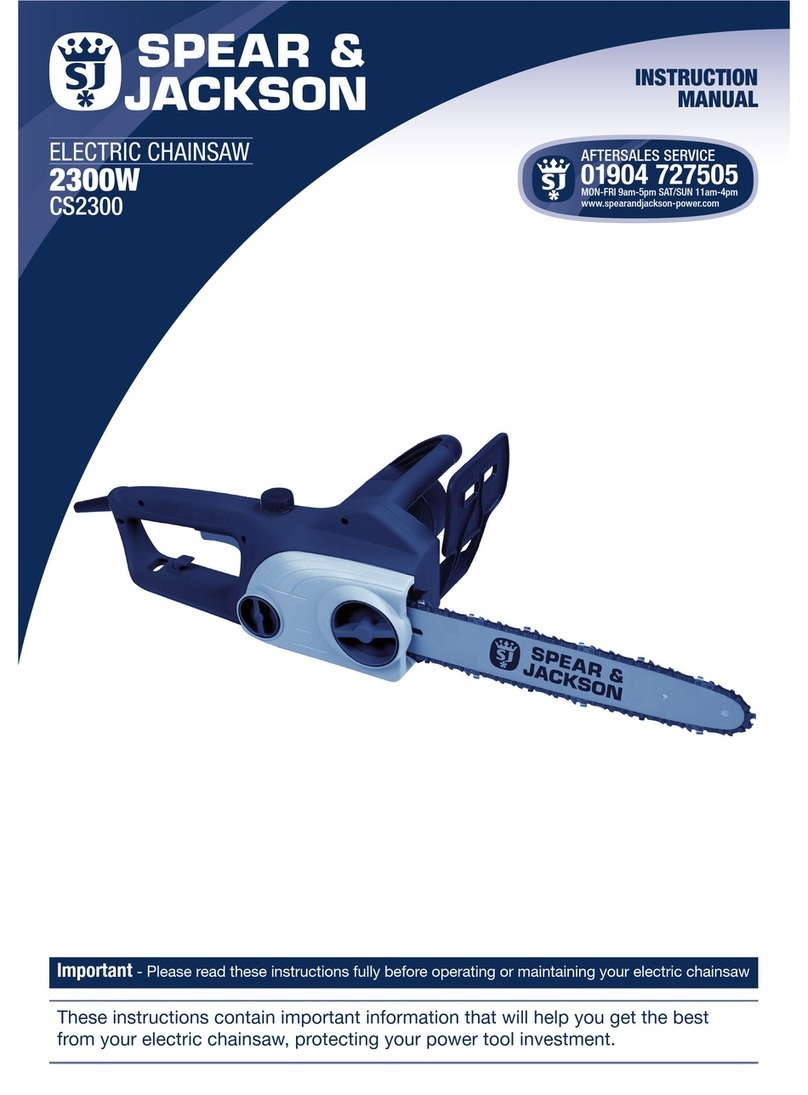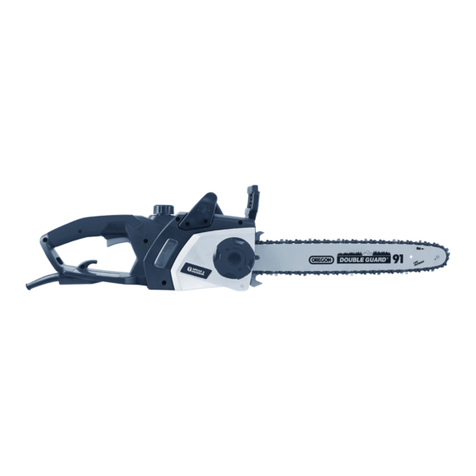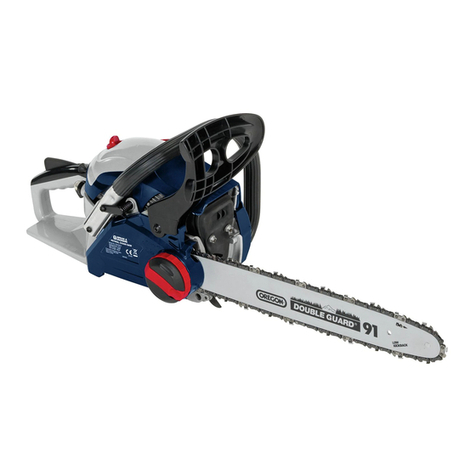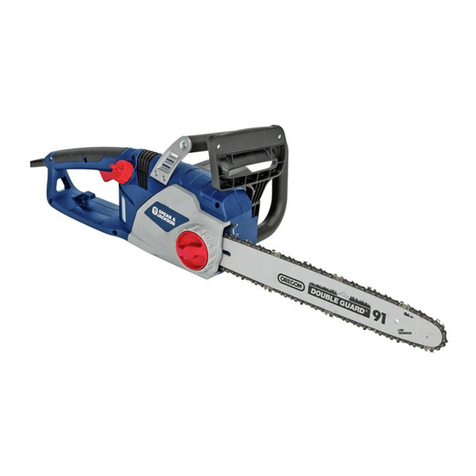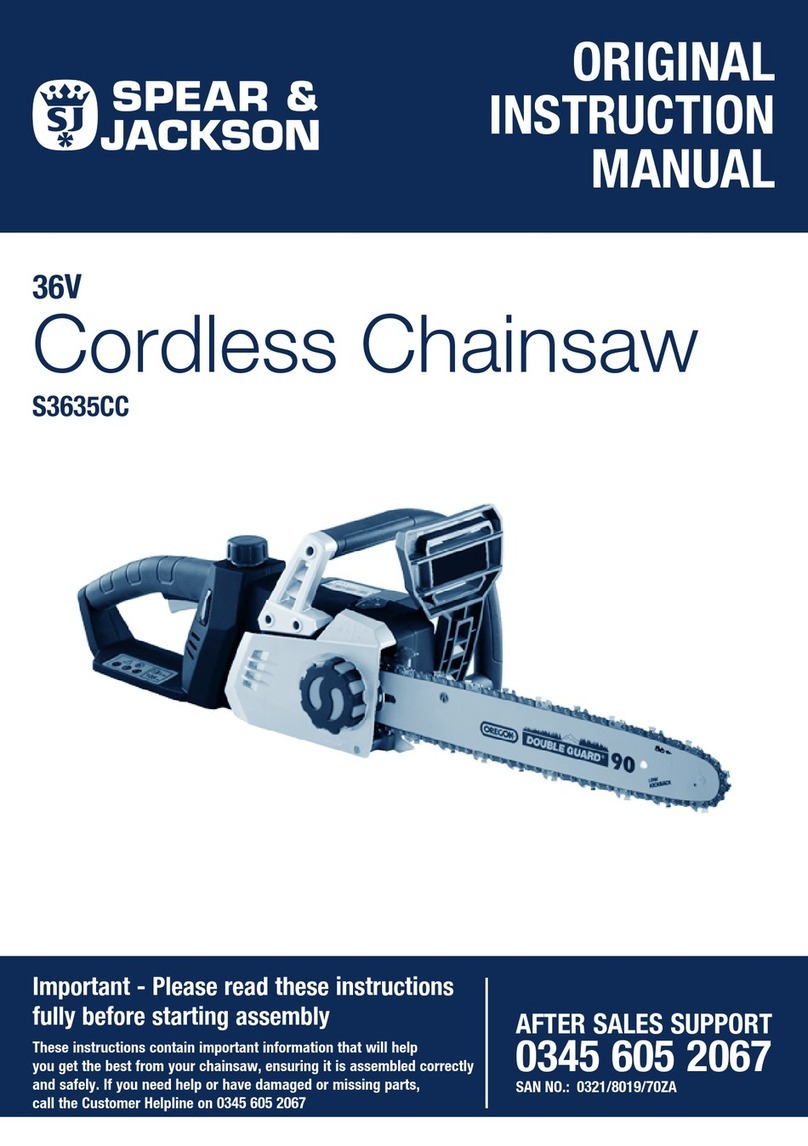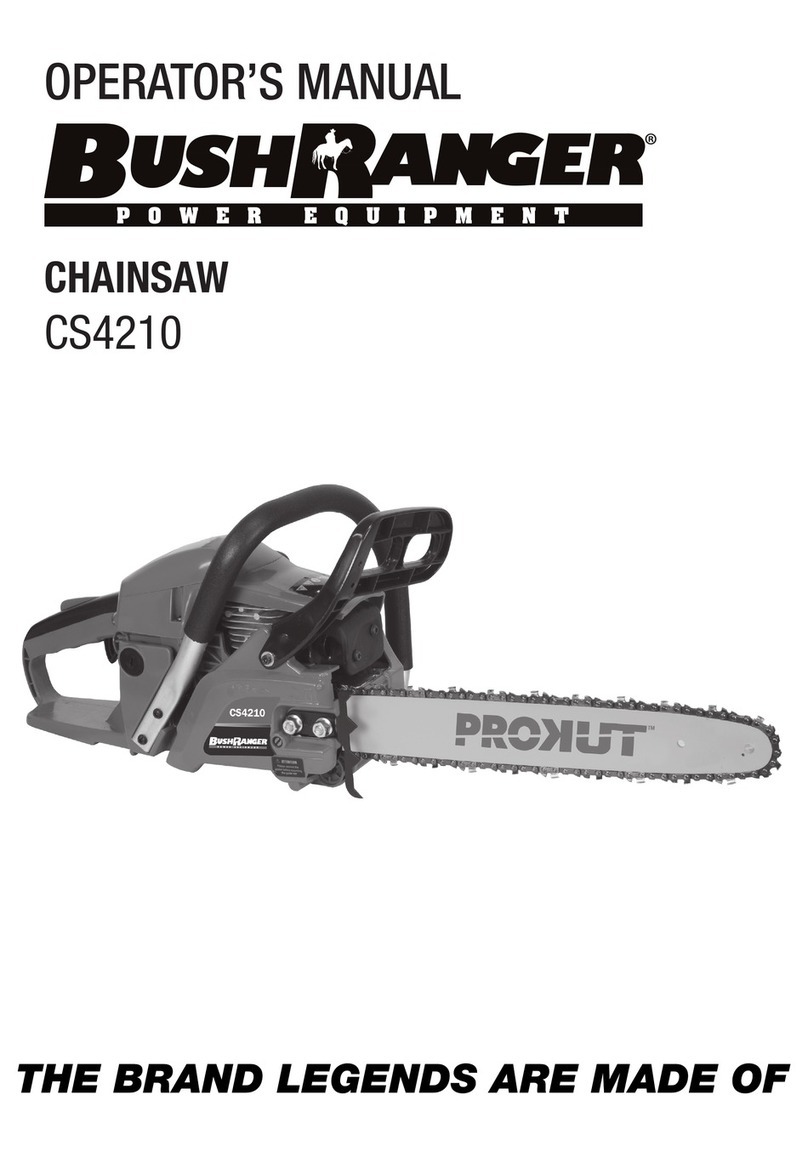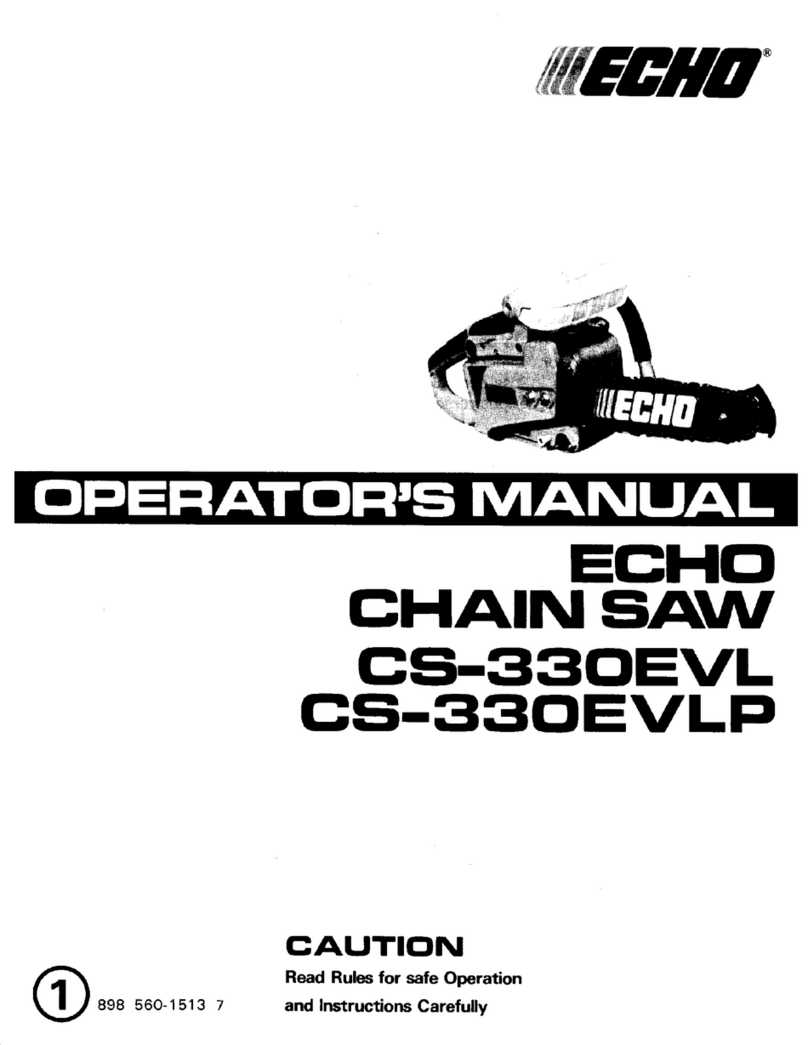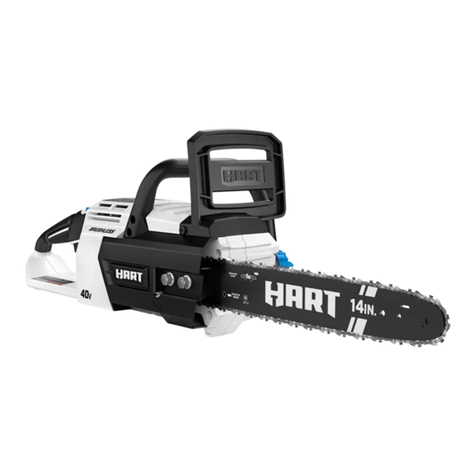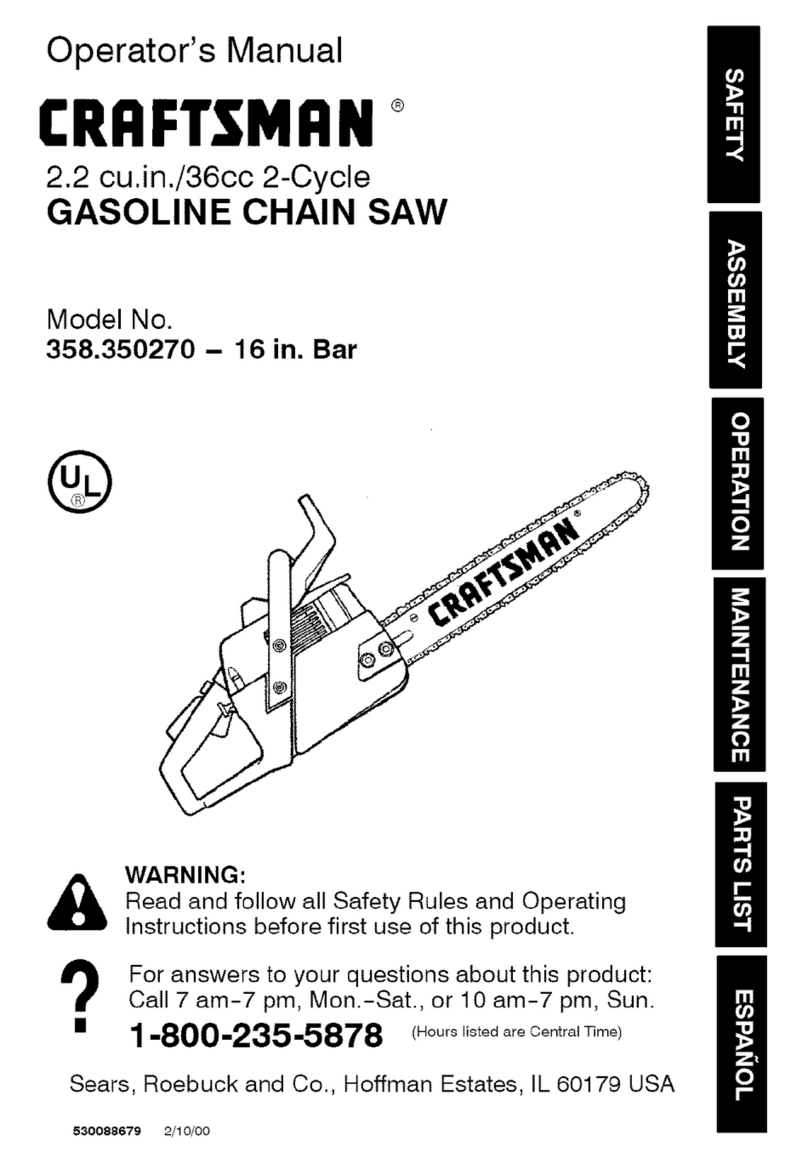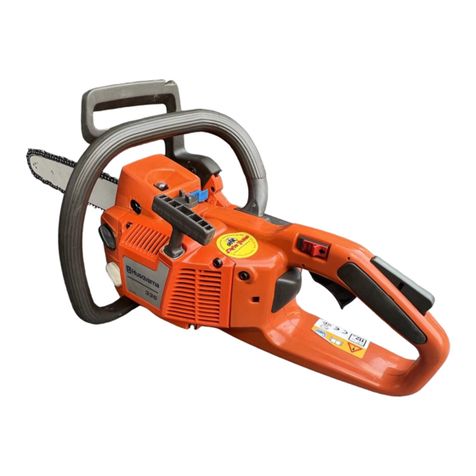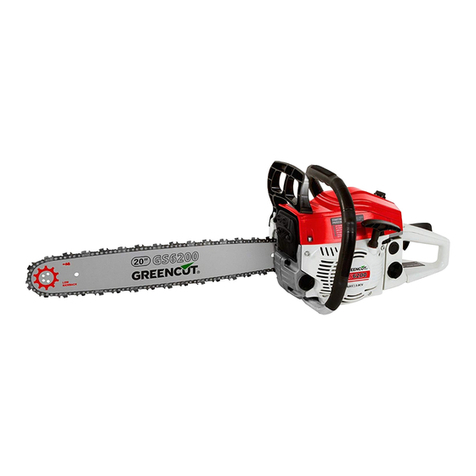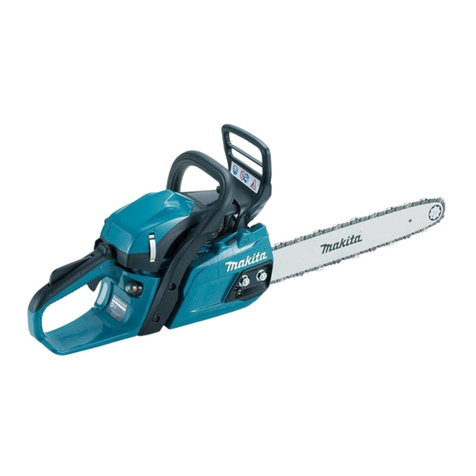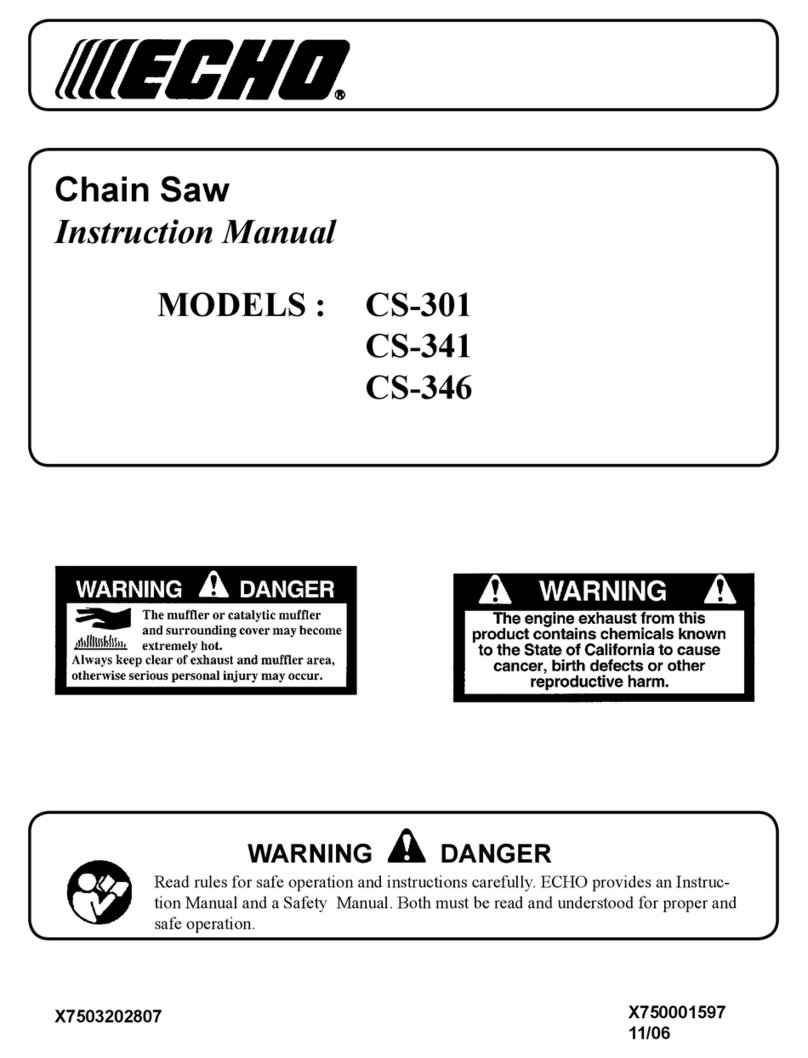4. Using the treatment of electric tools
앬Do not overload your tool. Only use suitable
electric tools to perform your work.
Using the right electric tool allows you to work
better and safer within the toolʼs quoted capacity
range.
앬Do not use an electric tool whose switch is
defective.
An electric tool that no longer can be switched on
or off is dangerous and must be repaired.
앬Pull the plug out of the socket and/or remove
the battery before making any adjustments to
the tool, changing accessories or put the tool
down.
This precaution eliminates the possibility of
inadvertently starting the tool.
앬When not in use, store electric tools out of the
reach of children. Do not allow those persons
to use this tool who are unfamiliar with it or
who have not read these instructions.
Electric tools are dangerous when they are used
by inexperienced persons.
앬Take good care of your tool. Check that
moving parts properly function and do not jam,
that parts are not broken off or damaged in any
way and that the tool can be used to its full
capacity. Have damaged parts repaired prior to
using the tool.
The cause of many accidents can be traced back
to poorly maintained electric tools.
앬Keep your blades sharp and clean.
Properly maintained blades with sharp edges jam
less frequently and are easier to use.
앬Make sure to use electric tools, accessories,
attachments, etc. in accordance with these
instructions. Take the conditions in your work
area and the job in hand into account.
Using electric tools for applications other than
those intended can lead to dangerous situations.
5. SERVICE
앬Have your tool repaired only by authorized
specialists using original replacement parts.
This will ensure that your tool remains safe to use.
4.1 Special safety instructions for
chainsaws
The safety instructions must be observed
when using the machine. For your own
safety and the safety of others, please read
this information carefully before using the
machine and keep it in a safe place for refe-
rence. Use the chainsaw only to saw wood
or objects made of wood. Any other types
of use are at your own risk and could well
be dangerous. The manufacturer cannot be
held liable for damage caused by improper
or incorrect usage.
Safety instructions and accident pre-
vention
To prevent the incorrect handling
of the chainsaw, please read the
operating instructions in their
entirety before using the machine
for the first time. All the informa-
tion on the handling of the chainsaw is relevant
to your personal safety. Ask a professional to
show you how to use the machine!
앬Switch the machine off before releasing the
chain brake.
앬To prevent damage to your hearing, wear ear
muffs; helmets with a visor are particularly
advantageous.
앬Make sure you have a firm footing when working
with the chainsaw.
앬Always switch off the machine before putting it
down.
앬Always pull the plug out of the power socket
before doing any work on the machine.
앬Only plug in when the machine is switched off.
앬The chainsaw must be used only by one person
at a time. All other persons must stay clear of the
chainsawʼs area of swing. Children and pets in
particular must be kept well away at all times.
앬The saw must not be touching anything when it
starts up.
앬Hold the chainsaw firmly in both hands when
working with it!
앬The chainsaw must not be operated by children
and young people. The only exception to this rule
are young persons of 16 years and over who can
use the chainsaw under supervision as part of
their training. Lend the saw only to those persons
who are familiar with this type of machine and
know how to handle it. Always pass on the ope-
rating instructions along with the chainsaw!
앬The chainsaw may be operated only by persons
who are rested and in good health, i.e. in good
physical condition. If you start to tire, have a
break in good time. The chainsaw may not be
used after the consumption of alcohol.
앬If the machine is not going to be used for a while
it must be set aside in such a way that no other
person is endangered.
앬Before making a cut, always set the claw stop
GB
9

